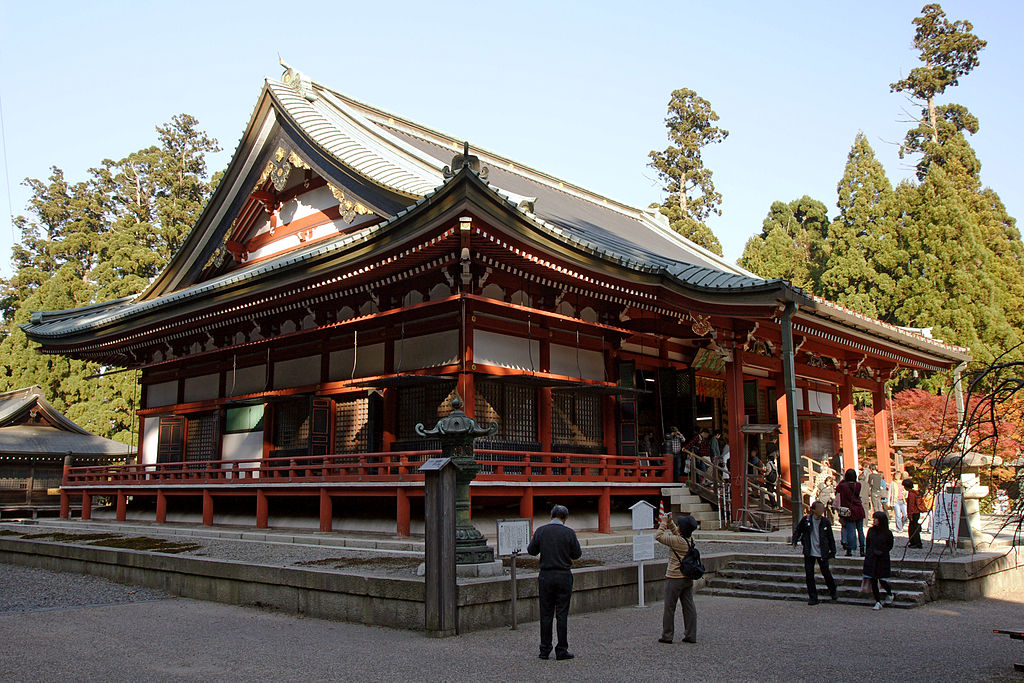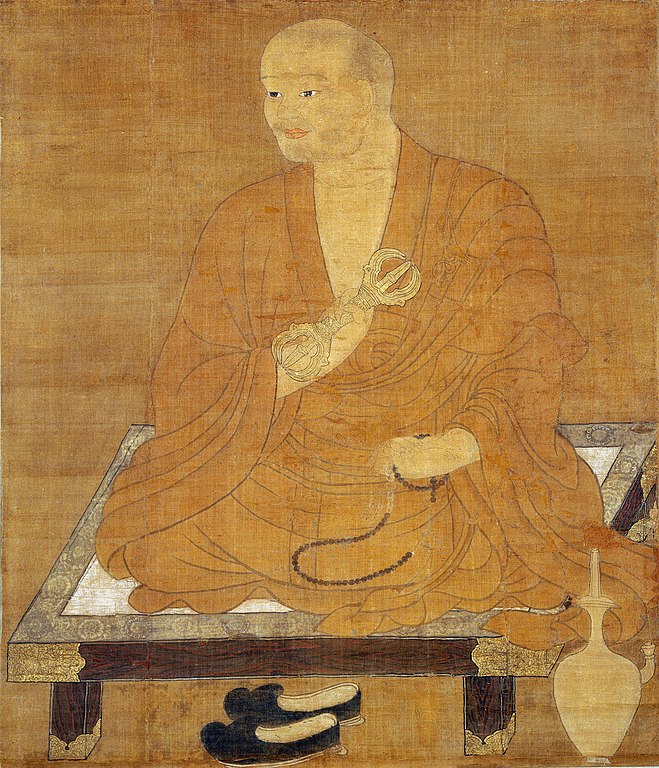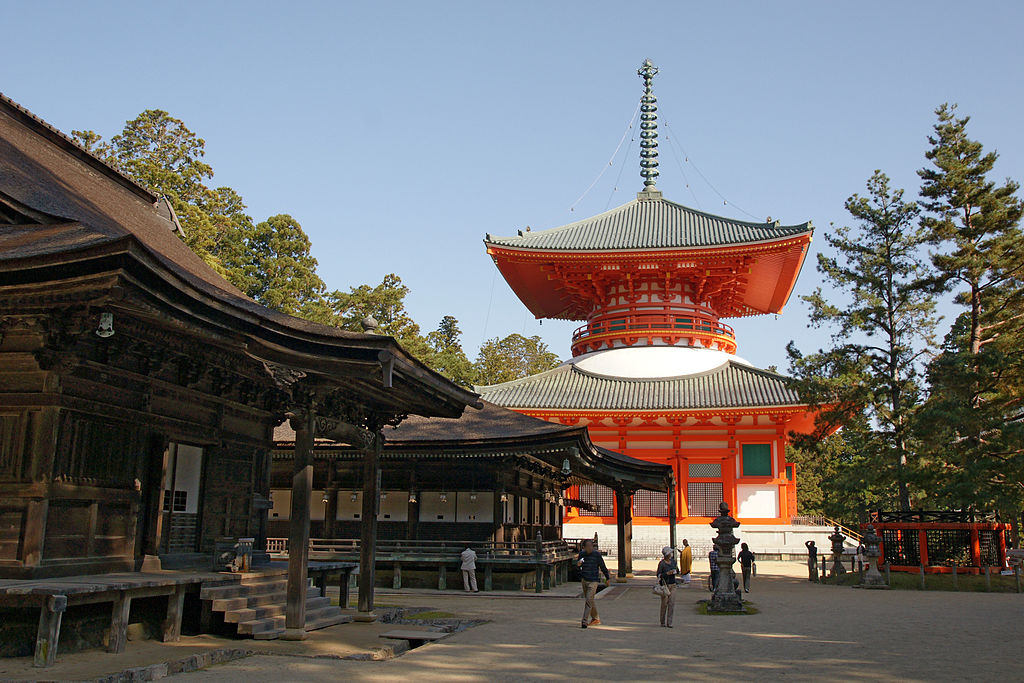
Saicho returned from China in 805, Kukai stayed a little longer, and returned in 806. The teachings and practices these two men elaborated upon their return within the two schools they established – respectively, Tendai and Shingon – marked the launch of a creative effort to work out a genuinely Japanese form of Buddhism, beyond the formal practices Nara Buddhism had inherited from China and Korea.
To be fair, Buddhism had already undergone a radical reorientation since its entry into China at the beginning of the first millennium. The Lotus Sutra, which had been rejected by mainstream Indian Buddhism, had come to be viewed as the final teaching of the Buddha. The Awakening of Faith in the Mahayana had synthesised the Tathagatagarbha (Buddha-nature) and Yogacara’s alaya-consciousness as two aspects of One mind – “the mind in terms of the Absolute” and “the mind in terms of phenomena,” thus establishing the “ever-present possibility of transforming the latter into the mind of awakening.”

In her book on Original Enlightenment, Jacqueline Stone says that, in the totalistic visions of the Huayan and Tiantai schools, emphasis on non-duality had already “entailed a reconception of the empirical world. No longer was it the product of delusion or a place of suffering to be escaped, but the very realm where truth is to be realized and liberation achieved.” With Kukai’s introduction of esoteric teachings, and the long process of esoterisation of the Lotus Sutra undertaken in the Tendai school, the doctrine of original enlightenment quickly took centre stage, and eventually became orthodoxy.
The six schools of Buddhism in the preceding Nara period (710-794), which were under the control of the state in the capital, upheld a gradualist model of liberation. In contrast, both Saicho and Kukai established their monastic centres away from Nara – for Saicho, Mt Hiei, which, however, soon found itself rather close to the new capital in Heian-kyo (today’s Kyoto), and for Kukai, Mt Koya, in the Wakayama Prefecture, at several days’ walking distance from the capital.
Stone states that Saicho “did not develop hongaku (original enlightenment) as a doctrinal category … Nevertheless he is important to the development of medieval Tendai original enlightenment thought … Saicho was responsible for a number of innovations in thought and practice that, over time, would deeply differentiate Japanese Tendai from its continental predecessor.” Though he had obtained some esoteric teachings, Saicho had spent most of his time in China with Daosui, the 7th patriarch of the Tiantai school, as he needed to obtain from him the Tiantai lineage in order to secure the court’s official authorisation to found Japanese Tendai on Mt Hiei. However, Stone notes that “Saicho’s own initiation in China into the esoteric teachings had not been as detailed as Kukai’s,” so, “for seven years, from 809 through 816, he made a point of borrowing and copying esoteric texts from Kukai and even received an abhisekha or esoteric initiation from him, as did several of his leading disciples.” The relationship between Kukai and Saicho soured after 816, in part at least because Kukai used esoteric teachings to design a set of practices, whereas Saicho insisted on integrating these teachings with those of the Lotus Sutra.
However, though Kukai has been described by a scholar as “one of the intellectual giants of Japan, who ought not to be ignored in any account of the history of Japanese thought,” while being widely held as a popular hero, for being the master who brought Buddhism to Japanese people (in contrast to the elite in Nara), it is in the Tendai temple complex Saicho established on Mt Hiei that original enlightenment thought developed, and was passed on to the founders of the Kamakura schools, who all trained there.

Saicho was indeed instrumental in creating institutional conditions that would make it possible for Japanese monastics to go beyond simply transplanting Chinese Buddhist schools into Japanese soil. Enryaku-ji on Mt Hiei was not just a temple. It was a monastic institution with three thousand sub-temples, which was to play the role of a Buddhist university for many centuries. Before being drawn to the Tiantai school, Saicho had been ordained in the Kegon (Ch Huayan) school. In China, he had also received initiation from a Chan master of the Ox Head school. So he could offer a wide range of teachings as well as practices, in addition to Zhiyi’s Tiantai teachings based on the Lotus Sutra and the Threefold Truth, – in particular Mitsu (Mikkyo – Esoteric teaching based on the Mahavairocana Sutra), Zen meditation, and Kai (Mahayana Precepts). Monks were encouraged to seek new insights through their personal practice, guided by masters through the use of private transmission papers called kuden. Ultimately, it is on the basis of these kuden that a sophisticated understanding of original enlightenment was achieved over three centuries later.
Source:
Jacqueline I. Stone – Original Enlightenment and the Transformation of Medieval Japanese Buddhism

